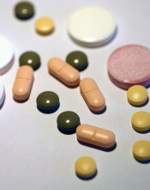Treating Cancer: Systemic Therapy
Author: John Published Under: Health

Cancer is treated in a number of ways, with some types of cancer responding very well to a single type of treatment, while others respond well to a combination of treatments. Often, the type of treatment used depends on how far the cancer has spread, as well. There are two basic types of cancer treatment called systemic treatment and local treatment. During local treatment, only the area with cancer and immediately surrounding it is treated. During systemic treatment the entire body is treated.
Chemotherapy
Chemotherapy is one of the most common types of cancer treatments, which consists of a drugs administered orally or through the blood. In both cases, however, the drug will enter the bloodstream, fighting and hopefully killing all the cancer cells.
Usually, chemotherapy is administered in cycles, with periods being given where no treatment is administered, so the patient can recover. The recovery period varies, with it sometimes being only a few days, going on to several weeks. This varies, depending on the health of the individaul, as well as the response to the chemotherapy.
In most cases, chemotherapy is administer as an outpatient treatment or even in the patients home, although this is not always the case.
There are a number of side effects of chemotherapy, as the drugs used do not only affect cancer cells, but other cells that also divide rapidly. In the case of blood cells, it is not uncommon for the chemotherapy to attack health cells, causing infections and making it easier to bruise or bleed easier.
Chemotherapy can also damage cells in the hair and hair roots, causing hair loss, with the hair usually regrowing, although in a different color and texture.
Chemotherapy can also cause nausea, vomiting, diarrhea, and poor appetite, because it affects the cells that are located in the digestive tract. It is also common chemotherapy to affect fertility in both males and females.
In most cases, the effects of chemotherapy are not permanent, although they can be very serious. The doctor will usually prescribe some medications to help treat the side effects of chemotherapy.
Hormone Therapy
Hormone therapy is another type of systemic cancer treatment, which is used because some types of cancer require hormones to grow and spread. Usually either drugs or surgery is used during hormone therapy, which attempts to prevent the cancer from getting the hormones that it needs.
- Surgery: During surgery, organs that create the necessary hormones are removed, such as the ovaries or testicles.
- Drugs: Drugs are used in hormone therapy to suppress the production of hormones in the body.
The side effects of hormone therapy varies, depending on the type of hormone treatment used. In the case of surgery, the effects are permanent, although they can often be treated with medication. This is not always the case with drug treatment.
Common side effects of hormone treatment are hot flashes, weight gain, nausea, and reduced fertility. It can cause the menstruation cycle to stop in women, result in breath growth, and loss of sexual desire.
Biological Therapy
Biological therapy is a systemic treatment, which is intended to boost the immune system, allowing it to better fight the cancer. There are several types of biological cancer treatments use, which vary depending on the type of cancer that is present.
For example, when treating bladder cancer, a bacteria called Calmette-Guerin(BCG) is used, which stimulates the immune system, causing it to better fight the cancer cells.
The side effects of biological cancer therapy varies, but it is not uncommon to develop flu-like symptoms, as well as for a rash to develop around the injection point. Often, biological cancer therapy is administered in the doctor office, as a supplement to other cancer treatments.
Stem Cell Transplantation and Bone Marrow Transplantation
Stem cells are often administered to patients in an effort to stimulate new blood cell growth. This allows for larger doses of chemotherapy to be administered, as chemotherapy not only destroys cancerous blood cells, but also healthy ones. Often, the patients own stem cells are harvested prior to treatment, so they can will stand a better chance of acceptance.
A number of side effects can occur, but this varies depending in great part in how the stem cells are taken and received. Less side effects occur when the stem cells are from the patients own body.
When stem cells are received from a third party donor, graft-versus-host disease(GVHD) can develop. GVHD most often affects the liver and digestive tract, with it also affecting skin cells. GVHD does not always occur right away, with it sometimes developing years after treatment. GVHD can be fatal.
Bone Marrow Transplants have also beocome more common and attempts to replace infected bone marrow, with healthy bone marrow. Again, this type of treatment works best when the patient can use their own bone marrow or that of someone related